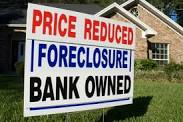Spring 2014
Collateral Damage to Standard Economic Theory… GCER Fellow Dan Cao shows how incorrect beliefs can fuel a crisis.

In the years leading up to the financial crisis of 2008, several financial institutions invested heavily in highly risky mortgage-backed securities. Financial markets allowed these institutions, including prominent banks, to speculate on the future returns of these securities. When home prices crashed in around 2006-2007, mortgage interest rates soared, leading to defaults by homeowners. This drastically reduced the value of those securities. During this time, some hedge funds profited by short-selling these securities.
In his paper “Collateral Shortages, Asset Price and Investment Volatility with Heterogeneous Beliefs”, GCER Fellow Dan Cao finds that, contrary to standard economic theory, such speculators with possibly incorrect beliefs survive in the long run and their speculative activities permanently drive up price and volatility.
The standard view dating back to Friedman (1953) hypothesizes that agents with incorrect beliefs will eventually be driven out under complete markets and will have no influence in the long run. Under incomplete markets, in contrast, Cao shows that financial institutions speculating with potentially incorrect beliefs survive in the long run drive up asset price and real investment volatility. The financial institutions mentioned above could just walk away from their collateral and get back into the market at a later time, using their current and future endowments, since the penalty for bad bets for these institutions is low. Additionally, Cao introduces a framework to model the effect of agents with heterogeneous (potentially incorrect) beliefs on asset prices. Further, using this framework, he studies the impact of different types of regulations on welfare, asset price volatility and investment.
